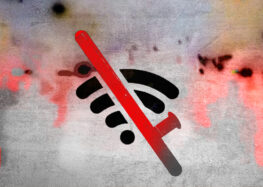The National Information Network (National Internet)
HISTORY
While the state devoted considerable resources and institutional capacity to filtering the Internet up to this time, a new dimension began during the Ahmadinejad period (2005-2013) regarding Iran’s approach to the Internet. Namely, the development of a national infrastructure that would give the authorities full control over all access to the Internet, as well as the ability to monitor all content that flowed across its national infrastructure.
In 2006, Telecommunications Minister Mohammad Soleymani announced that a “National Information Network,” more commonly known as the National Internet, would be launched in two or three years. This Network would create a domestic, government-controlled Internet, in which the state would decide all content and access. In effect, the National Internet would create a locked wall around the Internet for users inside Iran, with the government as the sole key holder. Needless to say, as sole holder of the key, the government would have full access to the content of any account.
Publicly, the government bills the National Internet as a means to “increase Internet speed and security inside the country.” The government also argues the National Internet is needed due to sanctions against the country. While exports of personal communications tools and services to Iran are now allowed, financial transactions remain difficult due to banking sanctions, and Iranians are still blocked from making purchases from many companies such as Apple, Microsoft and other app stores. They have to use third parties to access them, which security experts discourage as it increases the risk of malware infections, and are also more frequently targeted by online scams that fraudulently sell banned services.
Despite numerous promises, completion dates have been postponed many times. Based on the current five-year development plan (2011-2015, or in the Persian calendar, 1390-1394), the National Internet is to be completed by the end of winter 2016. According to Article 46 of the five-year plan, “The country’s National Information Network should be an IP-based Internet supported by data centers that are completely undetectable and impenetrable by foreign sources and allows the creation of private, secure Intranet networks. This definition of the National Network was solidified in the Supreme Cyberspace Council’s meeting on December 24, 2013.
The first phase of the National Internet was originally planned for implementation in September 2012, with the separation of Internet and Intranet networks (making the National Network independent of the global Internet). The second phase, originally due by the end of March 2014, would see the hosting of all web sites
transferred inside the country (in other words, the storage of all the content on the National Internet would be on servers that are physically inside Iran). In the third phase, planned for implementation by 2016, the National Internet would be managed inside the country, exclusively utilizing Iranian software and applications so that foreign software would no longer be used in Iran.
As none of these phases have, as of yet, been fully implemented, the establishment of the National Internet is clearly behind schedule. This is due primarily to a number of technical and logistical difficulties in its development—as well as political infighting between hardliners anxious to push forward its implementation, and more moderate forces, primarily within the Rouhani administration, who see Internet freedom as integral to their overriding goal of economic modernization and revitalization, and have control over budgetary allocations and technical implementation. Iranian officials have publicly blamed delays in the project on the international sanctions regime tied to the countries’ nuclear program.
Nevertheless, work on the National Internet’s development and implementation continues, reflecting a worldview, dominant among hardline authorities who maintain significant power bases in the intelligence, judicial and security apparatuses, in which any non-state-controlled source of information is seen as suspect, if not treasonous. In a typical remark, Police Chief General Ahmadi Moghaddam described Google’s search engine as “spying tool” against users in a January 20, 2012, interview with the Mehr news agency, and stated, “The National Internet can facilitate protecting the people’s security and information. Today, South Korea is also using a national Internet for its domestic and foreign communications. I believe the National Internet can be a major step towards protecting the country.”






